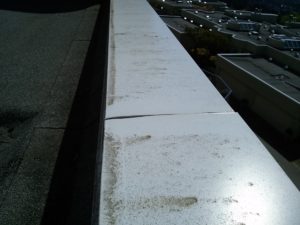A West Vancouver town-home inspection was performed with special attention to the rain screening that was now 5-years old. Would there be performance issues?
One of the outstanding features of most homes along Folkstone Way in West Vancouver is their amazing southern view out over the waters of Georgia Straight. Most of the area was developed in the 1980 with what’s called the California style – flat roofs, no roof overhang and stucco exteriors.
These building styles were perfect candidates for what in Vancouver is called “the leaky condo syndrome” phenomena.
It was a crisis because rainwater would penetrate behind the stucco. This wet environment created moist conditions where mold and rot thrived. It destroyed the structural wood elements behind the stucco on the exterior. Mold growth affected the residents on the interior. Typically after 15 to 20 years, these buildings required an extensive renovation, usually identified throughout the Vancouver region with the now infamous blue tarp covers. A building was draped in giant tarps while the exterior envelope was being removed and replaced.
Once the exterior was repaired, the exterior envelope was considered to be “rain-screened”. This is a construction technique that includes:
- drip caps over doors and windows,
- superior sealing of metal joints used for coping and flashing along the roof perimeter,
- attention to detail as to how the flat roof membrane attached the inner exterior walls,
- rain-screening membrane applied around windows and doors, and
- an air gap behind the exterior wall allowing for air flow to dry-out any moisture penetrating the exterior.
Yesterday I inspected one of these properties that was rain-screened five years earlier. The warranty for the building’s rain-screen envelope was limited to five years. Naturally there was a concern that the home buyer would be liable for another round of costly renovations if the fix done early was not holding up. Fortunately the engineering design and construction techniques used for rain-screening five years earlier worked brilliantly and in this particular case the building envelope was sound.
With annual inspections of the roof membrane combined with the repair or replacement of any cracked or weathered sealants at the joints of the metal coping and flashing along the roof’s parapet wall, the building envelope should continue to perform into the future as expected.

